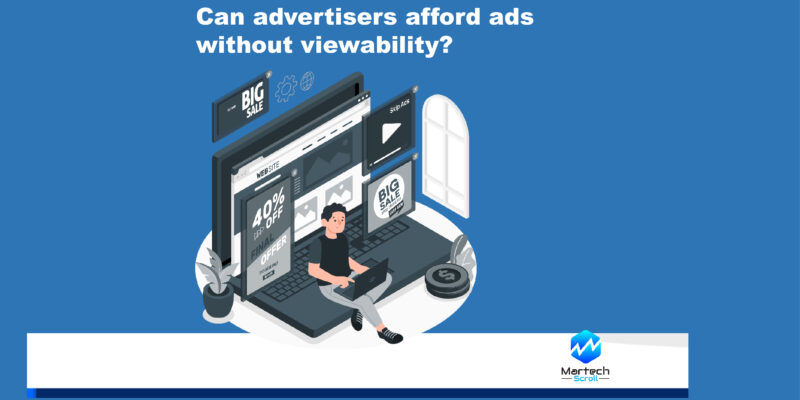What is ads viewability?
Ad viewability is a metric that determines how many of a digital advertiser’s ads users actually view. The Interactive Advertising Bureau (IAB) and the Media Rating Council have produced widely accepted industry standards for ads viewability, which state that an ad impression is visible if:
-Users can see at least half of the pixels for at least one second in display advertising.
-Users must see at least 50 percent of a video commercial for two seconds.
The viewability rate is the percentage of total ad impressions that were deemed viewable.
Should advertisers pay according to ads viewability?
According to a study conducted by marketing week, users cannot detect as accessible or cannot see more than half of all internet advertisements. Currently, advertisers have to pay for each ad impression. Here, the CPM pricing model is the most popular. It helps in analyzing how effective their ad campaigns are. But this might not be an effective case as, if more than half of the ads are unseen, that means advertisers are paying for those unseen ads as well. Thus, the concept of ads viewability is more comprehensive, taking in the debates around pricing and other profitability factors.
There is no complete guarantee that authentic users will see an advertisement. Viewability can be determined by 50 percent on the publisher, and 50 percent on the viewers. Even if the publisher places an advertisement in the right spot on the page, the targeted users can still choose to ignore it. Except for deliberately making them see the banner ad, there is nothing publishers can do to ensure that a marketing message reaches its intended audience.
Although a major part of inventory sold was below the fold and out of sight, agencies have driven CPMs lower for years. 57% of page reading time is spent above the fold, even as long-form content becomes the norm. The first two screens full of content get 74 percent of the total time spent watching. Advertisements at the bottom of a page will be displayed but not seen, according to these numbers.

ads viewability
Issues further affecting advertisers
Users employ a variety of strategies to avoid online advertisements, the most frequent of which is the installation of ad-blockers, which prevent commercials from showing on websites.
Advertisers who pay for served advertising (CPM) suffer enormous losses because of the widespread use of ad-blockers. They have to pay for ads that no one will ever view. 45 percent of adults aged 15 to 25 use an ad blocker when they are browsing. In the age bracket of 26 to 35, the adoption rate is 42%. Even those aged 56 and older use an ad-blocker to prevent promotional information from being displayed at all.
Another significant item to discuss is ad fraud.
Dichotomy between advertisers and publishers
Putting aside all these facts, firstly, it is important to know that the notions of what includes a “view worthy impression” are erroneous. Currently, the industry cannot be unanimous on what is included in a viewable impression. Is a view worthy impression, for instance, one that people can see after the webpage has loaded or one that is being viewed right now? What if the ad is available on the website but not seen until someone goes to a different tab?
A move towards paying according to viewability will cause a significant loss in publisher revenue if only around half of all supplied adverts are viewable. Many platforms will struggle to gain enough visible impressions, and as a result, pricing will almost surely rise. When many marketers refuse to pay a higher price they create a vicious spiral.Â
Publishers already get motivated to increase ad viewability since a higher viewability means a higher return on investment (ROI). Advertisers are more inclined to return to a platform if they see a larger return on investment.
Advertisers’ demand for 100% viewability
It’s clear that 100 percent viewability is a pipe dream invented by marketers and agencies looking to extract all the money out of the publishers with whom they collaborate.
Only if all publishers determined to over-deliver impressions with every campaign could such a standard be achieved. While this is ideal for agencies, publishers are unlikely to deliver this many make-goods in the near future, and ad buyers should not expect them to. There are further hurdles involved in this like guarantee on viewability and measuring all viewable impressions.








Comments